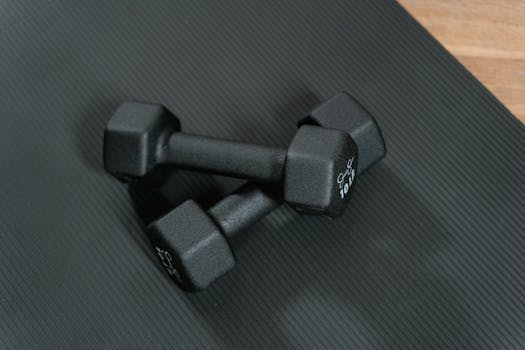
Introduction to Strength Training

Strength training is an essential component of fitness that helps build muscle, improve endurance, and enhance overall health. For beginners, starting this journey at home can be both convenient and effective. In this guide, we will explore the basics of strength training, equipment options, workout routines, nutrition tips, and common mistakes to avoid.
Section 1: Understanding the Basics

Before jumping into any workout routine, it’s crucial to understand what strength training entails. It involves using resistance to induce muscular contraction, which builds strength, anaerobic endurance, and muscle size. Beginners should focus on mastering form and technique to prevent injuries and ensure effectiveness.
Section 2: Essential Equipment for Home Workouts

While many strength training exercises can be performed using body weight, incorporating some equipment can enhance your workouts. Here are some essential items for home strength training:
- Dumbbells: Versatile and available in various weights, dumbbells can target different muscle groups.
- Resistance Bands: These are great for beginners and can be used to increase resistance as you progress.
- Exercise Mat: A comfortable mat provides cushioning for floor exercises.
Section 3: Creating a Workout Routine

When creating a workout routine, beginners should aim for a balanced approach that targets all major muscle groups. Here’s a simple weekly structure:
- Day 1: Upper Body (Push-ups, Dumbbell Shoulder Press, Rows)
- Day 2: Lower Body (Squats, Lunges, Deadlifts)
- Day 3: Core (Planks, Russian Twists, Bicycle Crunches)
- Day 4: Rest or Light Activity
Section 4: Nutrition for Strength Training

Nutrition plays a vital role in supporting your strength training goals. Focus on a balanced diet rich in protein, complex carbohydrates, and healthy fats. Aim to consume:
- Protein: Include sources like chicken, fish, beans, and legumes to aid in muscle repair.
- Carbohydrates: Whole grains, fruits, and vegetables provide the energy needed for workouts.
- Healthy Fats: Avocados, nuts, and olive oil support overall health.
Section 5: Common Mistakes to Avoid

As a beginner, it’s easy to make mistakes that can hinder progress. Here are some common pitfalls to watch out for:
- Skipping Warm-ups: Always start with a warm-up to prepare your muscles.
- Neglecting Form: Prioritize proper technique over lifting heavy weights.
- Inconsistent Workouts: Aim for regularity in your training schedule for optimal results.
In summary, strength training at home can be an effective way to improve your fitness. By understanding the basics, equipping yourself with the right tools, creating a structured routine, and focusing on nutrition, you’ll be well on your way to achieving your strength training goals.






